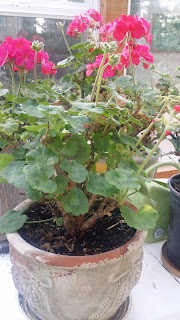A Child's Journey Through Placement

In November 2011 my husband and I were asked, by Child Protective Services, to take custody of our 11-day-old nephew. We said yes.
Baby is a joy and delight. We are thrilled to have him in our home. Our other two kids love him like crazy. However, these four months have been overshadowed with the fact that some day we will have to return him to his biological parents. This has been a painful fact to face, because we have bonded with this child. We have loved him as our own. To give him up will be one of the hardest things I will ever have to do. I know that I will continue to see him, as he is my nephew, but to not be his momma? To not be able hold him every day?

To try and grapple with these facts, and to try and learn how to best transition Baby back to his biological parents, I turned to books. More specifically, Vera Fahlberg's A Child's Journey Through Placement. This is not a new book, but it is considered to be one of the best written on child attachment.
This book covers so many aspects of foster parenting, adoption and attachment that only a few chapters pertained to our situation, but those that did were very helpful.
What I learned that applies to us:
1. The best time for placement is before six months of age or after four years. "In moving pre-verbal children, there is less margin for error than when we are working with older children. Workers and parents must pay close attention to specifics, particularly nonverbal detail."
2. "For the infant, the emphasis during pre-placement contacts is on transferring attachment and care-giving routines. As many routines as possible should be maintained in the new setting.
3. "The younger the child, the more attention adopters should pay to the sensory experiences of the infant, trying to duplicate as many of these as feasible." Examples, use same soaps, detergents etc.
4. Visits should be increased prior to the move. The "new" parents should come to the home and take care of the child in their accustomed environment as often as possible.
There is so much more in this book, but most of it did not apply to our situation. It is highly recommended reading to anyone involved with child placement, from foster parents, adoptive parents, extended family and child-care workers.


Comments
Post a Comment